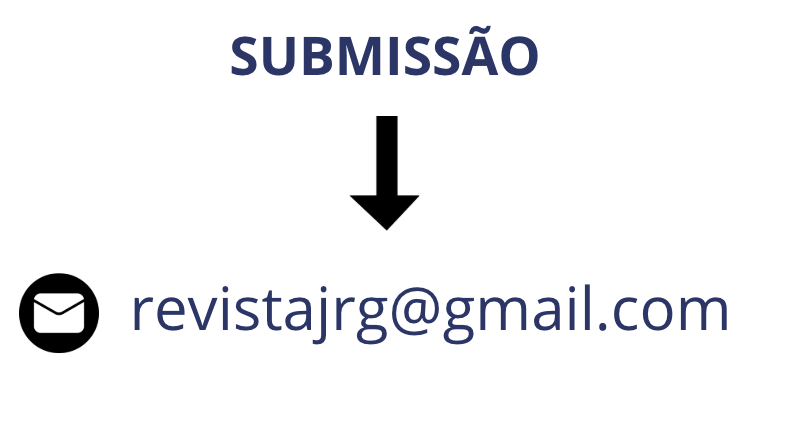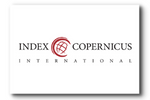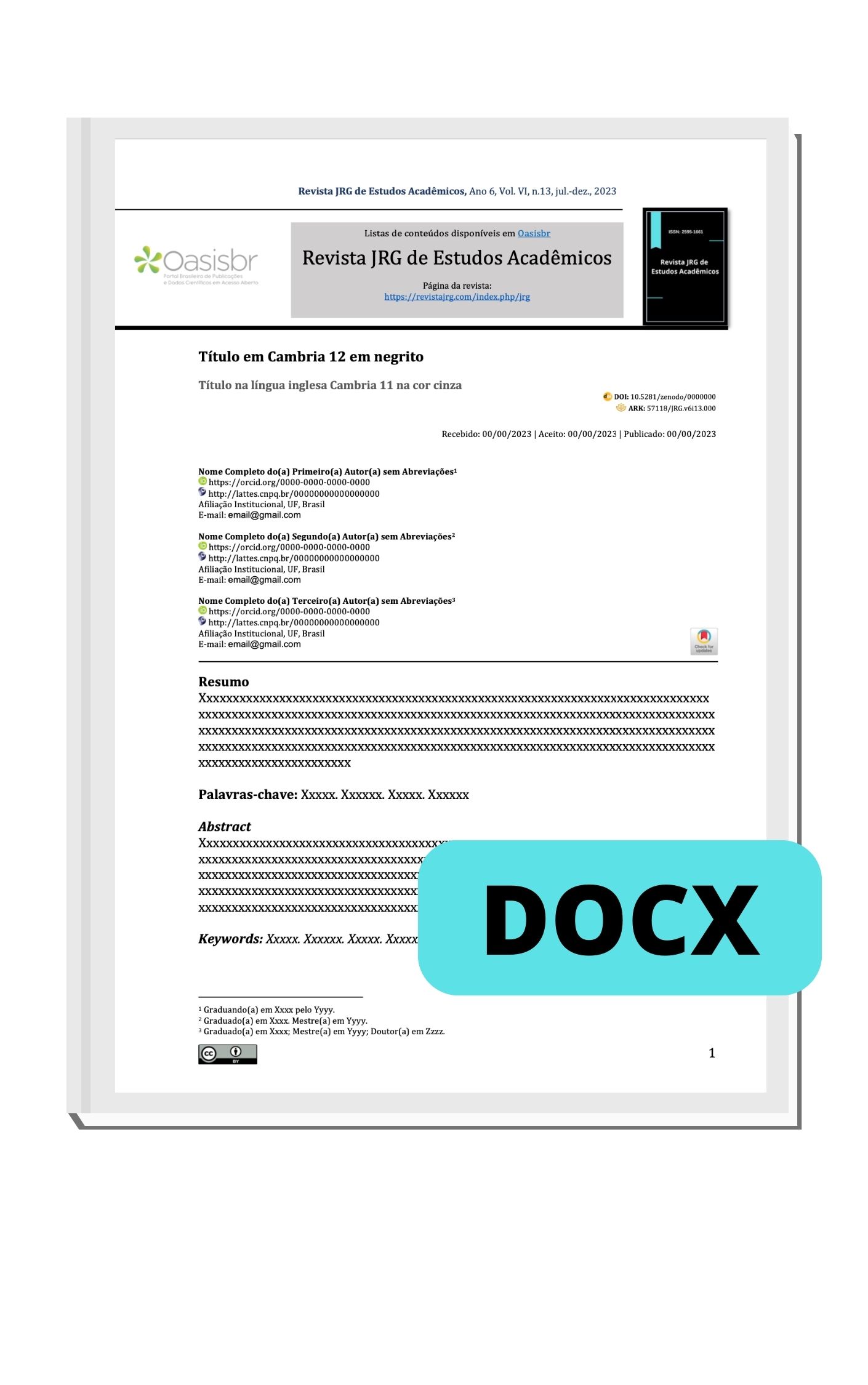The role of the physiotherapist in the prevention and treatment of urinary incontinence
DOI:
https://doi.org/10.55892/jrg.v7i14.1122Keywords:
Urinary Incontinence, Postpartum, Pelvic PhysiotherapyAbstract
Introduction: This undergraduate thesis aims to conduct a literature review on the role of physiotherapists in the treatment and prevention of postpartum urinary incontinence, a problem that significantly affects women's quality of life. Postpartum urinary incontinence is a common and often overlooked condition that can have significant psychological and social consequences. Physiotherapy is a potentially effective intervention to prevent and treat this condition, but current evidence is limited and not well established. Objective: This study seeks to analyze the contribution of physiotherapy in the prevention and treatment of postpartum urinary incontinence. Methodology: To do so, studies investigating the efficacy of different physiotherapy approaches, including pelvic floor exercises, biofeedback, and electrical stimulation, will be reviewed. Results: They indicated that those who received treatments focused on pelvic floor strengthening, compared to those who did not have access to physiotherapy, experienced a significant reduction in the incidence of this problem among women. Conclusion: Furthermore, it may contribute to the development of evidence-based clinical guidelines for the prevention and treatment of postpartum urinary incontinence.
Downloads
References
BO, Kari. Pelvic floor muscle training is effective in treatment of female stress urinary incontinence, but how does it work?. International Urogynecology Journal, v. 15, p. 76-84, 2004.
BO, Kari. Pelvic floor muscle training in treatment of female stress urinary incontinence, pelvic organ prolapse and sexual dysfunction. World journal of urology, v. 30, p. 437-443, 2012.
BO, Kari; HERBERT, Robert D. There is not yet strong evidence that exercise regimens other than pelvic floor muscle training can reduce stress urinary incontinence in women: a systematic review. Journal of physiotherapy, v. 59, n. 3, p. 159-168, 2013.
BO, Kari; HILDE, Gunvor. Does it work in the long term? A systematic review on pelvic floor muscle training for female stress urinary incontinence. Neurourology and urodynamics, v. 32, n. 3, p. 215-223, 2013.
HAYLEN, Bernard T. et al. An International Urogynecological Association (IUGA)/International Continence Society (ICS) joint report on the terminology for female pelvic floor dysfunction. Neurourology and Urodynamics: Official Journal of the International Continence Society, v. 29, n. 1, p. 4-20, 2010.
DUMOULIN, Chantale; CACCIARI, Licia P.; HAY‐SMITH, E. Jean C. Pelvic floor muscle training versus no treatment, or inactive control treatments, for urinary incontinence in women. Cochrane database of systematic reviews, n. 10, 2018.
FRAWLEY, Helena C. et al. Is pelvic-floor muscle training a physical therapy or a behavioral therapy? A call to name and report the physical, cognitive, and behavioral elements. Physical therapy, v. 97, n. 4, p. 425-437, 2017.
FRITEL, Xavier et al. Stress urinary incontinence 4 years after the first delivery: a retrospective cohort survey. Acta obstetricia et gynecologica Scandinavica, v. 83, n. 10, p. 941-945, 2004.
GOYAL, Parag et al. Impact of exercise programs on hospital readmission following hospitalization for heart failure: a systematic review. Current cardiovascular risk reports, v. 10, p. 1-8, 2016.
GRANT, Maria J.; BOOTH, Andrew. A typology of reviews: an analysis of 14 review types and associated methodologies. Health information & libraries journal, v. 26, n. 2, p. 91-108, 2009.
HADDAWAY, Neal Robert et al. The role of Google Scholar in evidence reviews and its applicability to grey literature searching. PloS one, v. 10, n. 9, p. e0138237, 2015.
HAY‐SMITH, E. Jean C. et al. Comparisons of approaches to pelvic floor muscle training for urinary incontinence in women. Cochrane Database of Systematic Reviews, v. 2011, n. 12, 1996.
HERDERSCHEE, Roselien et al. Feedback or biofeedback to augment pelvic floor muscle training for urinary incontinence in women. Cochrane Database of Systematic Reviews, v. 2011, n. 7, 1996.
MORKVED, Siv; BO, Kari. Effect of pelvic floor muscle training during pregnancy and after childbirth on prevention and treatment of urinary incontinence: a systematic review. British journal of sports medicine, v. 48, n. 4, p. 299-310, 2014.
PERERA, Jennifer et al. Descriptive cross sectional study on prevalence, perceptions, predisposing factors and health seeking behaviour of women with stress urinary incontinence. BMC women's health, v. 14, p. 1-7, 2014.
POPAY, Jennie et al. Developing guidance on the conduct of narrative synthesis in systematic reviews. J Epidemiol Community Health, v. 59, n. Suppl 1, p. A7, 2005.
REIMERS, C. et al. Change in pelvic organ support during pregnancy and the first year postpartum: a longitudinal study. BJOG: An International Journal of Obstetrics & Gynaecology, v. 123, n. 5, p. 821-829, 2016.
SAMPSELLE, Carolyn M. et al. Effect of pelvic muscle exercise on transient incontinence during pregnancy and after birth. Obstetrics & Gynecology, v. 91, n. 3, p. 406-412, 1998.
SANGSAWANG, Bussara; SANGSAWANG, Nucharee. Stress urinary incontinence in pregnant women: a review of prevalence, pathophysiology, and treatment. International urogynecology journal, v. 24, p. 901-912, 2013.
STAFNE, Signe N. et al. Regular exercise during pregnancy to prevent gestational diabetes: a randomized controlled trial. Obstetrics & Gynecology, v. 119, n. 1, p. 29-36, 2012.
THOM, David H.; RORTVEIT, Guri. Prevalence of postpartum urinary incontinence: a systematic review. Acta obstetricia et gynecologica Scandinavica, v. 89, n. 12, p. 1511-1522, 2010.
THOMPSON, Judith A.; O'SULLIVAN, Peter B. Levator plate movement during voluntary pelvic floor muscle contraction in subjects with incontinence and prolapse: a cross-sectional study and review. International urogynecology journal, v. 14, p. 84-88, 2003.
WESNES, Stian Langeland et al. The effect of urinary incontinence status during pregnancy and delivery mode on incontinence postpartum. A cohort study. BJOG: An International Journal of Obstetrics & Gynaecology, v. 116, n. 5, p. 700-707, 2009.
WOODLEY, Stephanie J. et al. Pelvic floor muscle training for preventing and treating urinary and faecal incontinence in antenatal and postnatal women. Cochrane Database of Systematic Reviews, n. 5, 2020.
WU, Jennifer M. et al. Prevalence and trends of symptomatic pelvic floor disorders in US women. Obstetrics & Gynecology, v. 123, n. 1, p. 141-148, 2014.











































